June Walking Tour – Cold-Hardy Cactus Collection in Bloom
It is time! The cacti have finally erupted into bloom despite our cool spring. Denver Botanic Gardens is home to one of the most impressive cold-hardy cacti collections in our region with colors ranging from sunny yellow to deep fuchsia and everything in between. We trial new varieties each year in various locations with the best micro-climates, continually pushing our Zone 5 boundaries. Often, we’re asked “Do these stay out all winter?” Yes! They are the cold-hardy collection and have evolved with cold winters in their native arid habitats.
The cactus family, or Cactaceae, (kak-tay-see-ay) is primarily endemic to the Americas, ranging from southern Canada to southern South America in distribution. One(!) of the 1800 species in the family is native to Africa, Sri Lanka and Madagascar. Most people intuitively know when they see a cactus but be careful – all cacti are succulents but not all succulents are cacti. Plants like agaves, aloes and succulent euphorbias are often confused for cacti. Plants in the cactus family are defined by their unique flower structure. Look for similarities in the cactus flowers you see today – many overlapping petals, hundreds of pollen-producing stamens, and a goofy-looking stigma with many lobes. Can you spot the difference between a cactus and a succulent?
- As you enter the Gardens, you will pass through Crossroads Garden and take a right into the meandering path of Roads Water-Smart Garden. As you pass through, notice several varieties of prickly pear, or Opuntia, blending seamlessly with the drought-tolerant flowering perennials. Opuntia is one of the most widespread members of the cactus family. Pads range from green to blue gray to dark purple depending on the species or hybrid selection. Prickly pear pads are often used as a culinary ingredient called nopal. The fruits are known for their amazing fuchsia color and sweet flavor.
- As you head west toward Nexus Garden, be sure to stop and marvel at some of our non-hardy collection staged in container plantings around the entrance to Marnie’s Pavilion. Can you find any Aloe or Euphorbia in flower? Notice the differences!
- Nexus Garden is a sunny, west-facing berm that flanks the greenhouse complex before you reach Monet Pool. Here, we highlight the amazing WALK IN BEAUTY™ series of Opuntia developed by local plantsman Kelly Grummons. Through hybridizing and selecting from thousands of seedlings over 10 years, Kelly was able to develop a strain of uniquely hardy, almost spineless, and incredibly floriferous plants.
- Also in Nexus Garden, there is a robust collection of claret cups, or Echinocereus. The species Echinocereus triglochidiatus is the state cactus of Colorado – occurring on dry slopes throughout the Southwest down into Mexico. They are also called hedgehog, haystack or strawberry cactus. You’ll notice some hybrids in this garden where the flowers range from orange to yellow to salmon to red. Flowering a few weeks after the claret cups is a hot pink species from New Mexico, Echinocereus fendleri, with dark-colored flesh and spines and a deep fuchsia flower.
- Another favorite cold-hardy cactus in this garden is the Cylindropuntia whipplei ‘Snow Leopard’ cholla. This variety is known for its heavy, dense growth that is covered in snow white spines all year round. The sun rises behind these creating an otherworldly glow in the mornings.
- As you pull yourself away from the raucous display in Nexus Garden, head around Monet Pool to Dryland Mesa. Here, you’ll want to meander through the path on top of the “mesa” past many interesting varieties of prickly pear, cholla and claret cup down to the southwest facing crevice section. You’ll notice some unique species of cactus tucked in along the way, like Echinocactus texensis, which is almost flat with fishhook spines – lovingly called the horse crippler cactus. At the southeast end look for the tiny, hot pink flowered Escobaria vivipara, which occurs across much of the foothills and plains of Colorado. Another favorite is the giant cylindrical cactus, Echinocereus triglochidiatus “White Sands Strain”.
- From here, loop back around the western slope of Dryland Mesa where you’ll find a wide variety of cold hardy species growing along the super sunny edge. Head left into the Laura Smith Porter Plains Garden to see naturalistic plantings of Opuntia rambling through the grassland, just like you’d find in much of eastern Colorado.
- From the Plains Garden, make your way toward the Rock Alpine Garden where you can see green pitaya, or Echinocereus viridiflorus, in troughs. Be sure to peek into the Cactus and Succulent House to see some amazing varieties of cacti that are not quite as cold hardy.
Though they are not for touching, our cold hardy cacti are an incredibly charismatic group of plants that can add year-round interest and provide vital habitat to any garden – not to mention show-stopping flowers. Be sure to plant this group in a super sunny location, with very well-drained soil.
This article and photos are contributed by Horticulturist Laura Swain.
Gallery
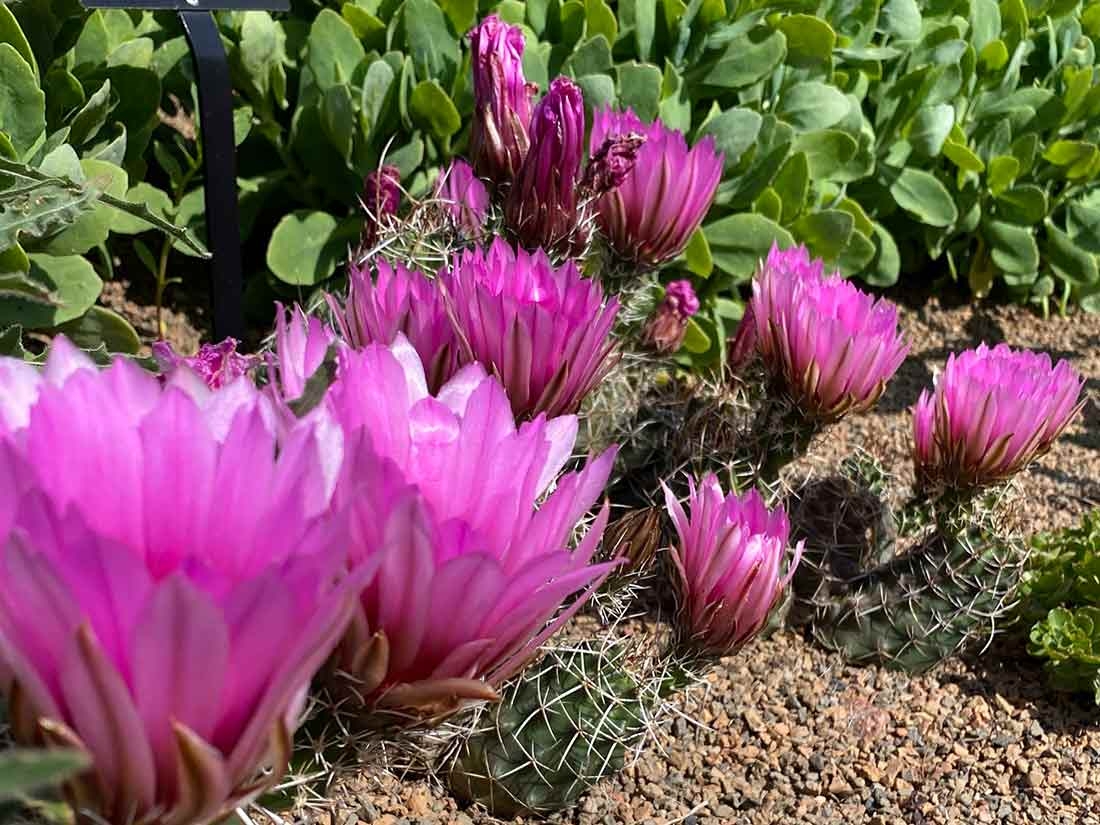
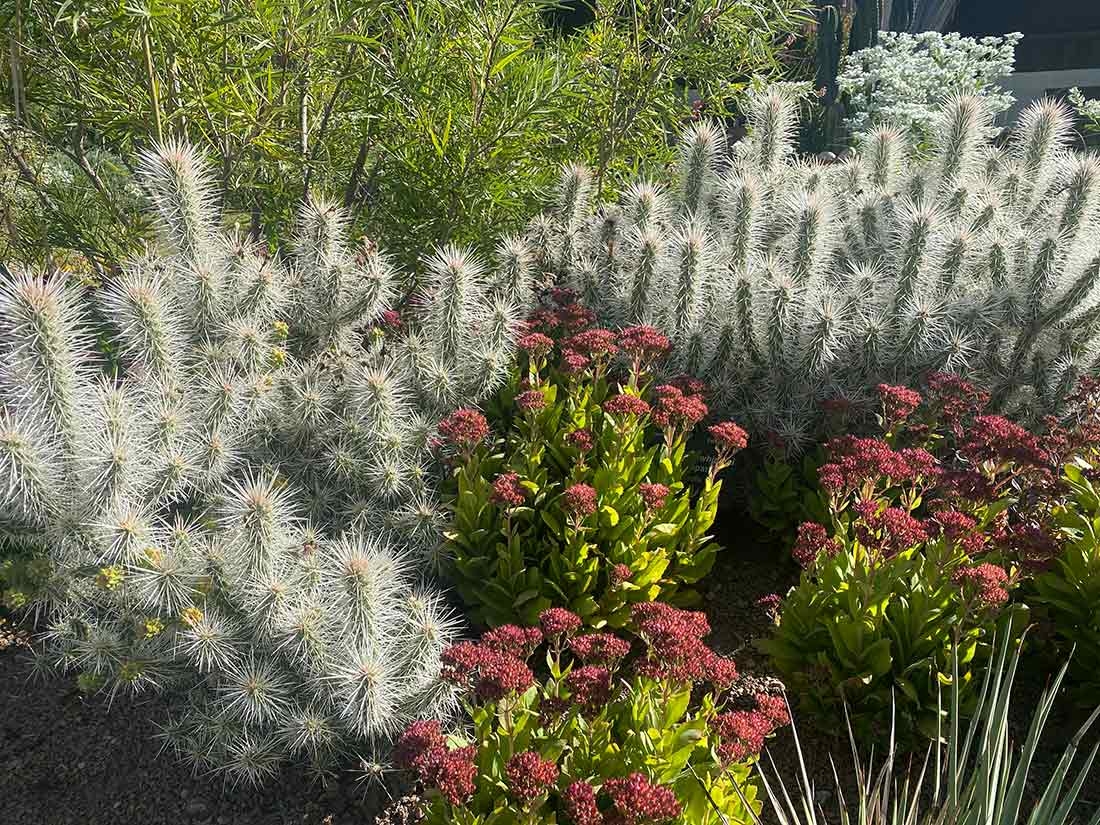
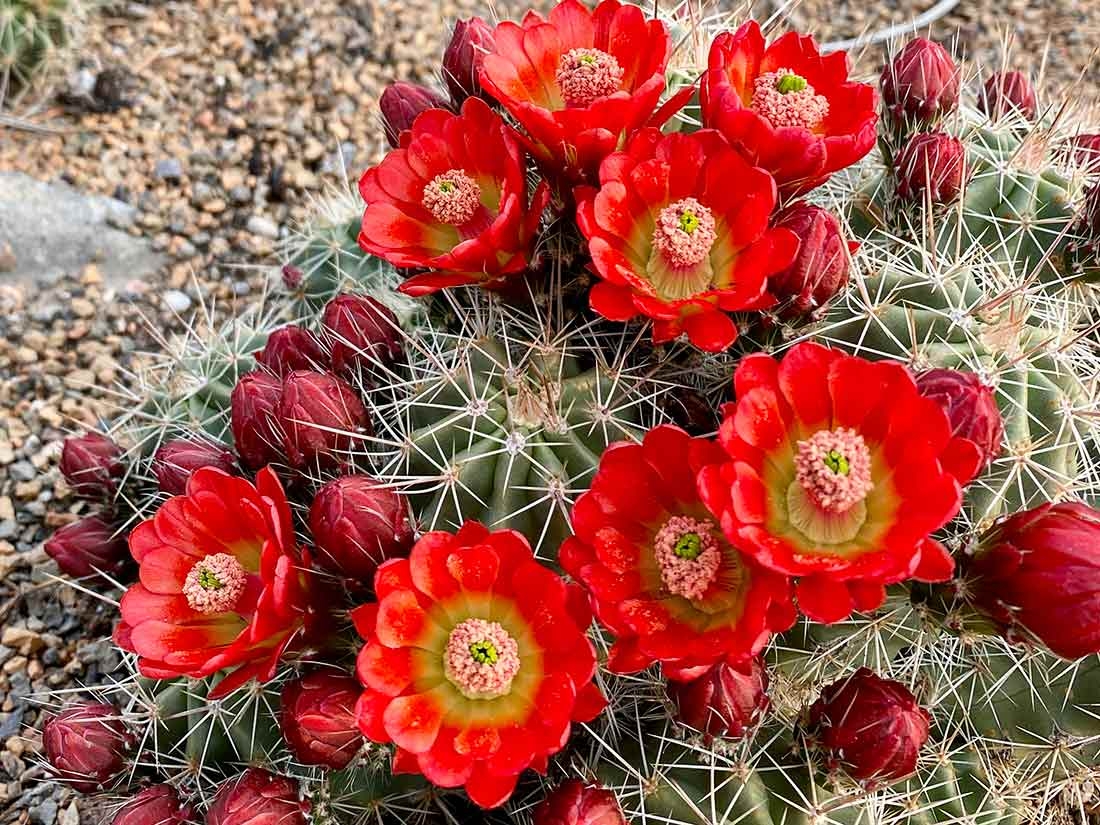


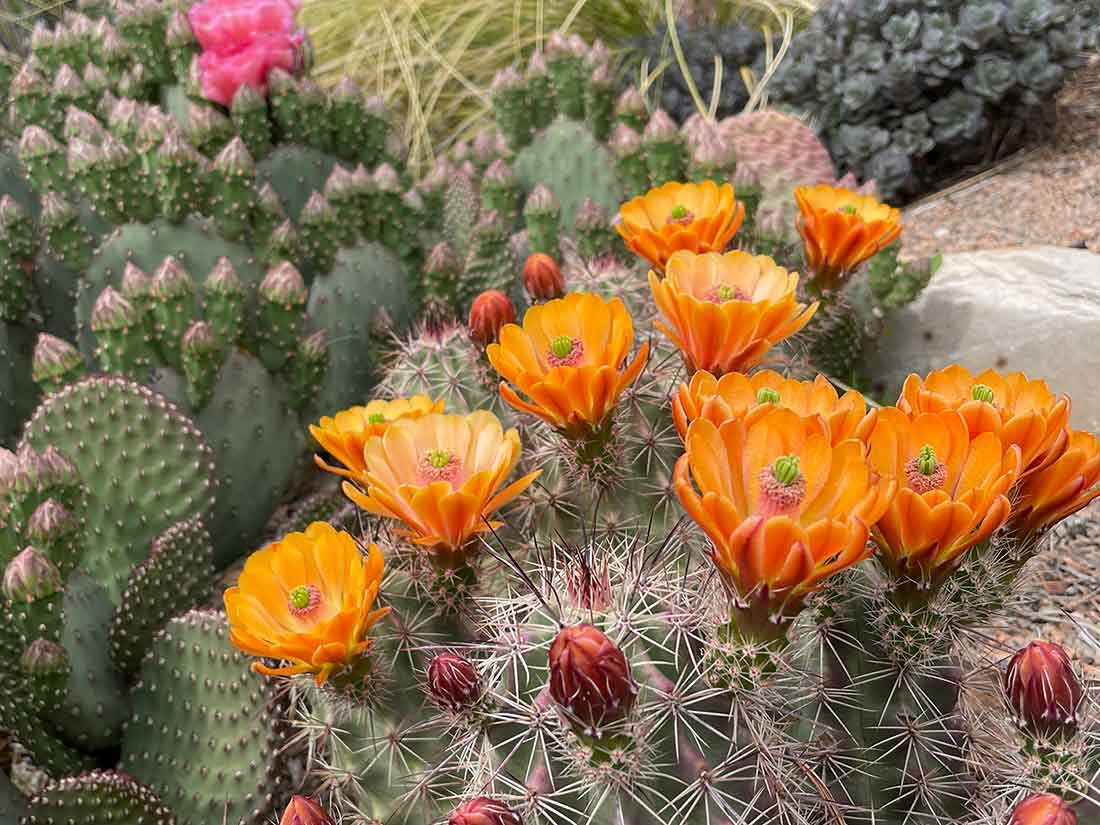
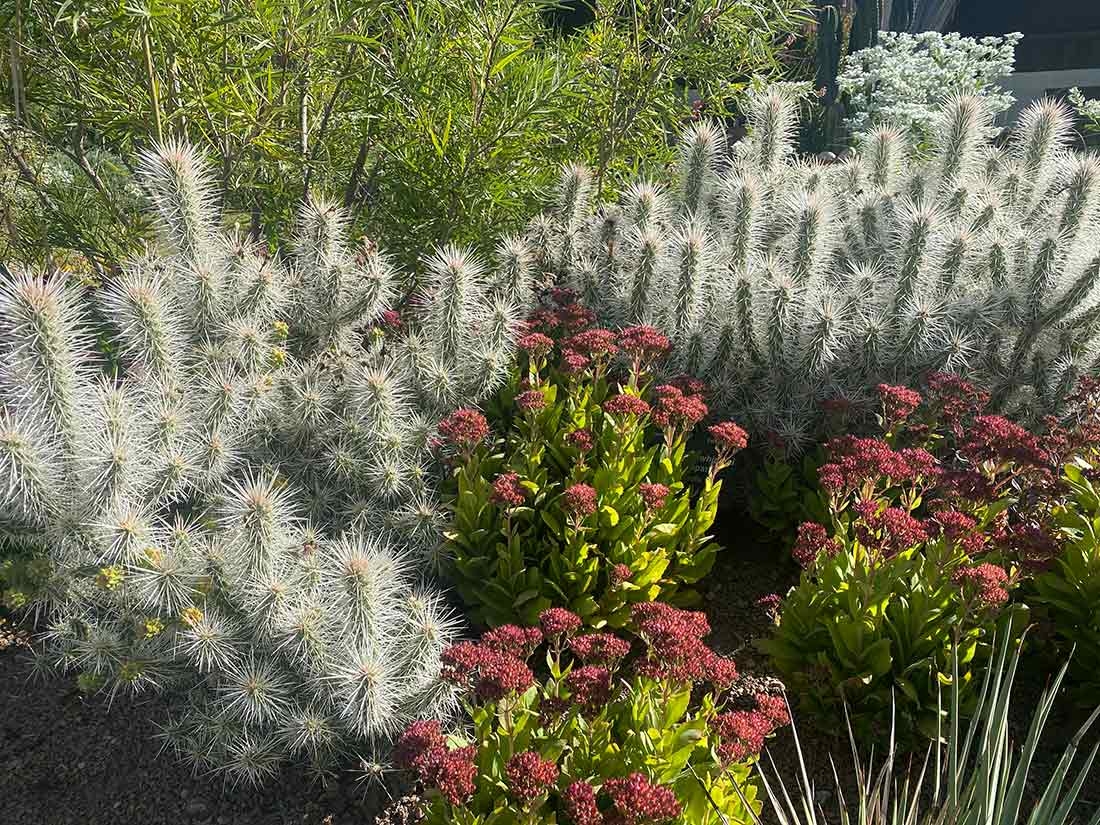
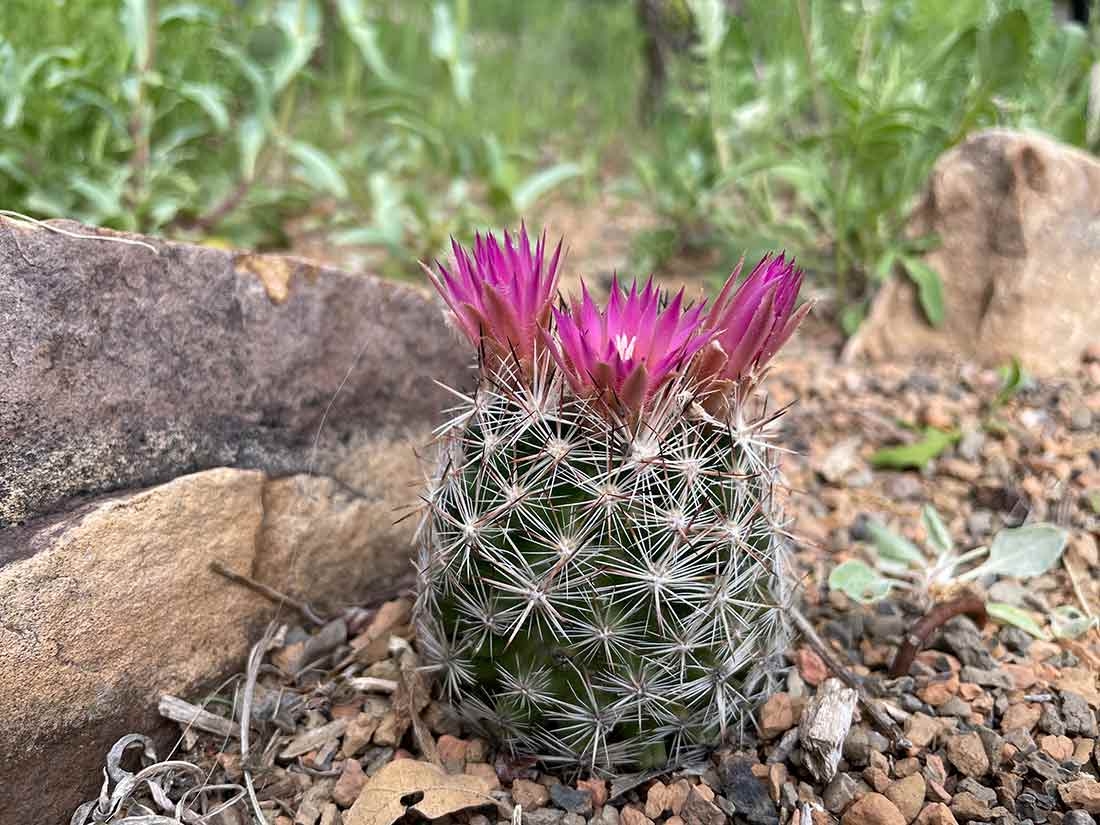
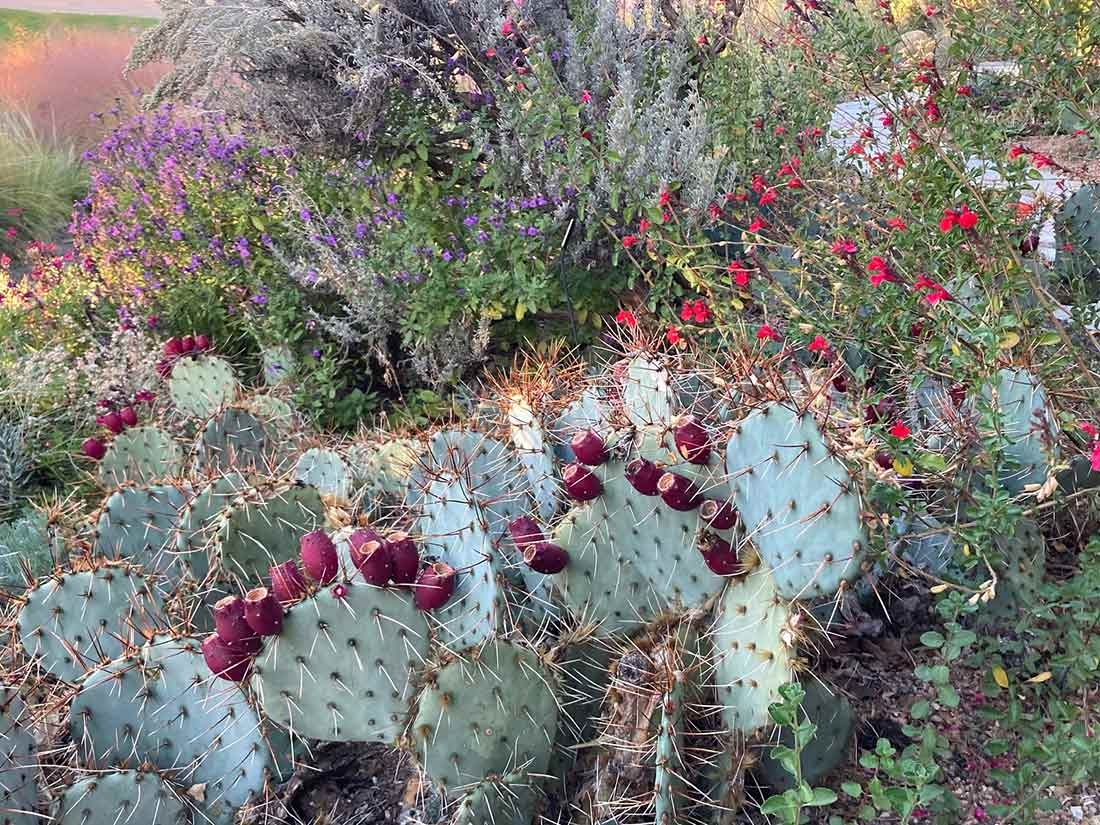
Add new comment